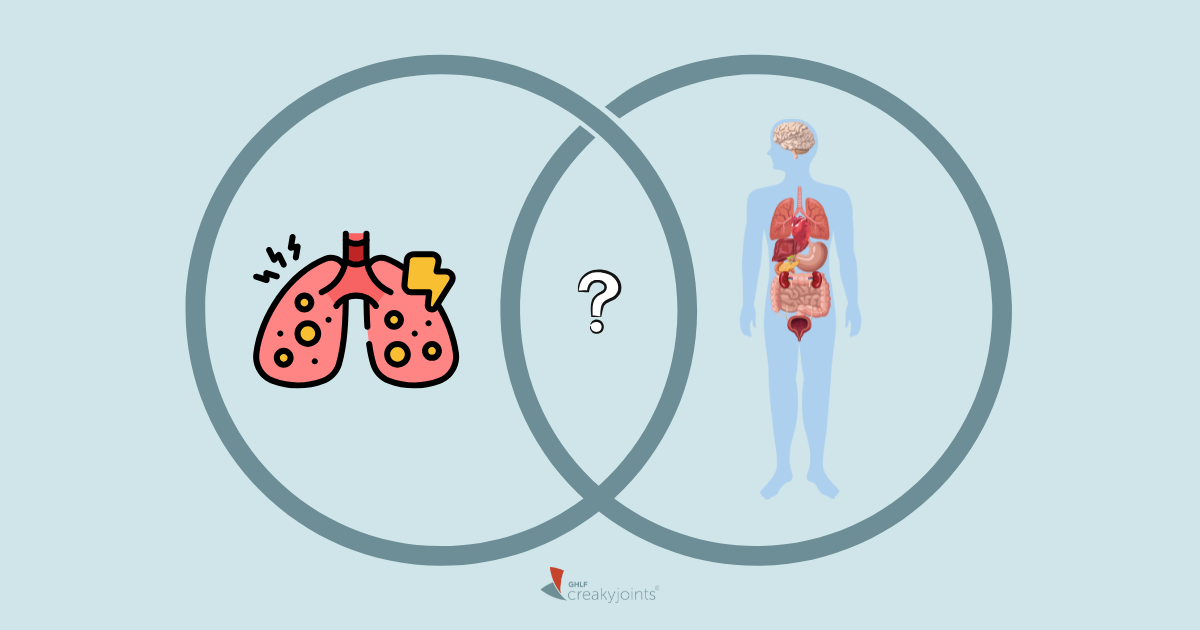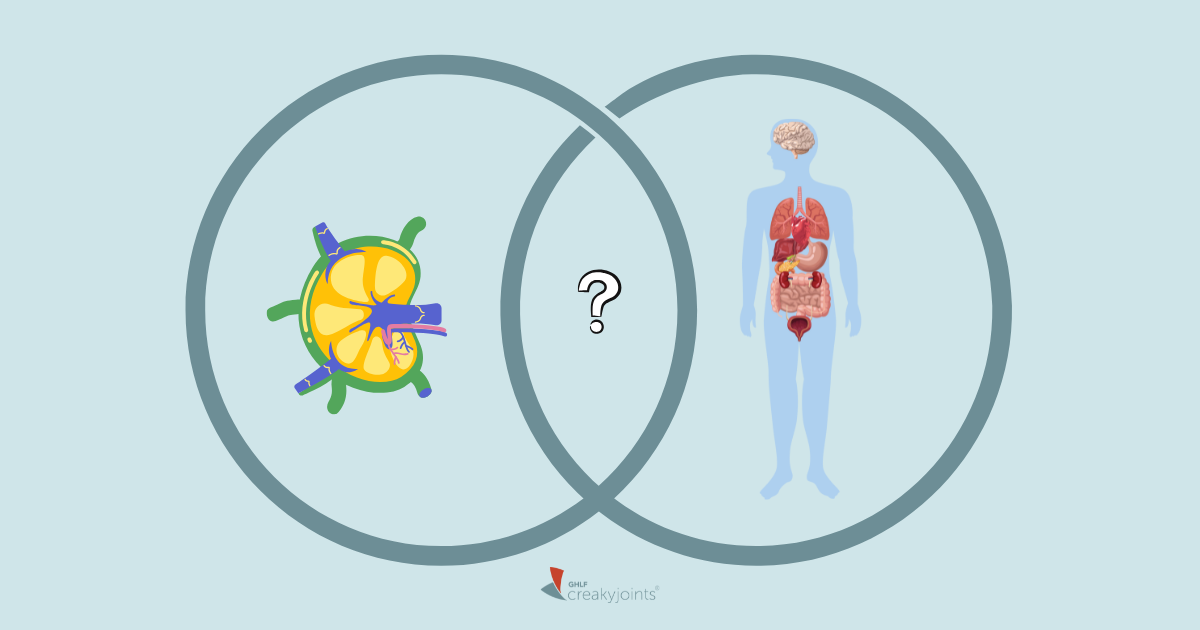Elisabetta Mercuri knows when it’s going to rain. “My joints get achy, especially in my hands,” she says. And when it’s cold and wet, the symptoms are even worse. “It almost feels like there’s ice in my fingers because they are so stiff,” says Elisabetta, who has lived with psoriatic arthritis for close to four decades. “And as I’ve gotten older, my joints feel the weather changes even more.”
Elisabetta is far from alone: “Patients often say they can tell when it’s going to rain based on how their joints feel,” says Anne R. Bass, MD, rheumatologist at Hospital for Special Surgery in New York City. “Humidity seems to be the biggest culprit, but we actually don’t know why.”
There’s the rub: People with arthritis often notice a connection between humidity or temperature and joint pain symptoms, and may even report it to their doctors. It’s a complaint Brett Smith, DO, a rheumatologist with East Tennessee Medical Group, hears often.
“Patients note that certain weather changes tend to produce more stiffness, more aching and more pain,” he says. “They feel their body is a ‘weather machine’ that can predict when it’s going to rain or when a cold front is coming.”
But scientifically speaking, the link between weather and joint pain isn’t clear or conclusive. Some evidence supports it: Research published in the Journal of Rheumatology found potential connections between humidity, temperature, and joint pain. The 2015 study included more than 800 people with osteoarthritis of the hip, knee, or hands; results showed that although changes in weather did not seem to affect symptoms, higher humidity was linked with increasing pain and stiffness, especially when the weather was colder. Another study on patients with rheumatoid arthritis found that disease activity increased with humidity and was lower on dry, sunny days.
Other science, however, suggests the opposite: A 2017 study analyzed data from more than 11 million medical visits and found no connection between rainy weather and joint pain. And research published in the journal Arthritis Care and Research also saw no link between low back pain and humidity or any other weather parameters.
More recently, our parent organization, the Global Healthy Living Foundation, presented findings from an observational study at the American College of Rheumatology’s annual meeting in 2018. Results showed a correlation between various weather patterns (including temperature, humidity, and barometric pressure) and people’s self-reported symptoms, but the link was not strong.
How Humidity May Affect Joints
Experts agree that more research is needed to determine how weather may be linked to arthritis symptoms, or why it affects some patients more than others. But they do have a few theories.
Changes in barometric pressure
Changes in barometric pressure is one possibility. When air pressure drops, it usually leads to clouds and rain; higher pressure areas are typically clear and calm. Shifts in air pressure may make your tendons, muscles, and any scar tissue expand and contract, leading to pain in the joints affected by arthritis.
Decrease in physical activity
Another idea: People tend to be less active when it’s humid, cold, and rainy outside — and inactive joints can become stiff and painful, explains Rajat Bhatt, MD, rheumatologist at Prime Rheumatology in Richmond, Texas. “With longer periods of inactivity and weather changes, we also see an increase in viscosity, or thickness, of synovial fluid in the joint, creating more stiffness and discomfort,” adds Dr. Smith.
Mood changes
It has also been suggested that weather affects mood, which may alter peoples’ pain perception. Bad weather may lead to a bad mood, and therefore may indirectly affect arthritis symptoms.
How to Ease Humidity-Related Joint Pain
You can’t control Mother Nature. But you can take these steps to help ease weather-related pain symptoms:
Stick to your arthritis treatment plan
This rain-or-shine rule includes taking your medication as prescribed, getting enough sleep, and maintaining a healthy weight.
Stay active
Whether you have osteoarthritis or an inflammatory type like rheumatoid arthritis or psoriatic arthritis, research shows even a little bit of exercise can help ease pain, when done correctly. Activity usually makes stiffness better as well, adds Dr. Bass. If the humid weather seems to be affecting your joints and you don’t feel up to going out for a walk or hitting the gym, find other ways to move. Even some simple stretching at home can help diminish pain and maintain range of motion. Talk to your doctor before you start any new exercise routine.
Ask about pain medications
Nonsteroidal anti-inflammatory drugs (NSAIDs) — such as over-the-counter ibuprofen (Advil, Motrin IB, others) and naproxen sodium (Aleve) — may ease pain. That’s what helps Elisabetta relieve her weather-related symptoms. She takes an Advil or Aleve, in addition to her regular medication regimen, which includes the biologic etanercept (Enbrel). Talk to your doctor to determine if over-the-counter or prescription pain medications are appropriate for you.
Consider an arthritis cream
Depending on the cause of pain and type of arthritis, a topical medicated or non-medicated cream may help, suggests Dr. Bhatt. If you have mild to moderate osteoarthritis in your hands or knees, arthritis creams may work for you; they don’t work as well for people with rheumatoid arthritis. Here’s everything you need to know about arthritis creams before you try one. Before adding any creams to your arthritis arsenal, talk to your doctor to make sure they are appropriate and safe for you.
Not Sure What’s Causing Your Pain?
Check out PainSpot, our pain locator tool. Answer a few simple questions about what hurts and discover possible conditions that could be causing it. Start your PainSpot quiz.
Keep Reading
Deall C, et al. Effect of Cold Weather on the Symptoms of Arthritic Disease: A Review of the Literature. Journal of General Practice. October 2016. doi: http://dx.doi.org/10.4172/2329-9126.1000275.
Does weather affect arthritis pain? Harvard Health Publishing. https://www.health.harvard.edu/blog/does-weather-affect-arthritis-pain-2019011715789. Published January 15, 2019.
Dorleijn DM, et al. Associations between weather conditions and clinical symptoms in patients with hip osteoarthritis: a 2-year cohort study. Pain. April 2014. doi: http://dx.doi.org/10.1016/j.pain.2014.01.018.
Interview with Anne R. Bass, MD, rheumatologist at Hospital for Special Surgery
Interview with Brett Smith, DO, rheumatologist with East Tennessee Medical Group
Interview with Rajat Bhatt, MD, rheumatologist at Prime Rheumatology
Jena AB, et al. Association between rainfall and diagnoses of joint or back pain: retrospective claims analysis. BMJ. December 2017. doi: https://doi.org/10.1136/bmj.j5326.
McAlindon T, et al. Changes in barometric pressure and ambient temperature influence osteoarthritis pain. American Journal of Medicine. May 2007. doi: http://dx.doi.org/10.1016/j.amjmed.2006.07.036.
Steffens D, et al. Effect of Weather on Back Pain: Results From a Case‐Crossover Study. Arthritis Care & Research. July 2014. doi: https://doi.org/10.1002/acr.22378.
Timmermans EJ, et al. The Influence of Weather Conditions on Joint Pain in Older People with Osteoarthritis: Results from the European Project on OSteoArthritis. The Journal of Rheumatology. October 2015. doi: http://dx.doi.org/10.3899/jrheum.141594.
What does it mean when a barometer is rising or falling? HowStuffWorks Science. https://science.howstuffworks.com/nature/climate-weather/atmospheric/barometer.htm. Published June 28, 2018.






